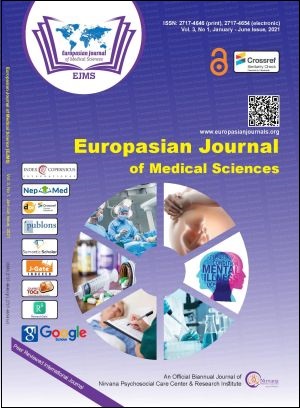TIMI (Thrombolysis in Myocardial Infraction) flow grade in ST Elevation Myocardial Infarction after Primary Percutaneous Intervention
Keywords:
Reperfusion therapy, Thrombus burden, Culprit lesion, Major adverse cardiac events (MACE)Abstract
Background: Timely reperfusion, preferably by primary percutaneous intervention (PCI) has been the guiding principle for the treatment of patients with acute ST-elevation myocardial infarction (STEMI). TIMI flow grade of the culprit lesion after the procedure has shown to have the significant implication in clinical outcome.
Objective: We aimed to study the relation of TIMI flow grade with the hospital outcome and complication among patients of STEMI.
Methods: All consecutive acute STEMI patients undergoing primary PCI during the study period (January 2020 to June 2020) were analyzed for correlation between TIMI flow grade and clinical outcome during the
hospital stay. Prior approval was taken from the institutional review board. The study design was a retrospective observational study.
Result: 51(55%) patients had achieved the TIMI 3 flow after the primary PCI. The number of patients achieving TIMI flow of 2,1 and 0 after the procedure was 34(37%), 6(6.5%), and 2(2%). Incidence of traditional risk factors like dyslipidemia, diabetes, hypertension was higher in TIMI flow <2. TIMI flow <2 was also associated with more adverse events namely cardiogenic shock, arrhythmias, in-hospital mortality, and overall major adverse cardiovascular events.
Conclusion: Patients with dyslipidemia had poor TIMI flow grades during primary PCI. Similarly, patients having hypertension, diabetes mellitus, and late presentation showed a tendency for TIMI flow <2. Also, the poor TIMI flow grade after primary PCI had unfavorable clinical outcomes like increased complications and mortality.
Downloads
Downloads
Published
How to Cite
Issue
Section
License
Copyright (c) 2021 Rikesh Tamrakar, Rajib Rajbhandari, Sanjay Singh KC

This work is licensed under a Creative Commons Attribution 4.0 International License.
The author(s) retain the ownership of the copyrights for their work published in EJMS without any restrictions. Upon submission, the author(s) grants EJMS a license to publish, including to display, store, copy, and reuse the published content.
License to Publish
By submitting a manuscript to EJMS, the author(s) grant the journal a non-exclusive license to:
- Publish and distribute the content in all formats, media, and platforms (both existing and future), while identifying EJMS as the original publisher.
- Reproduce, display, and store the content in both print and online formats, including institutional and digital repositories.
- Translate, adapt, and summarize the work, including reprints, extracts, and abstracts.
- Develop derivative works based on the original content.
- Include the work in electronic databases and provide links to third-party materials.
Creative Commons Licensing
In addition to EJMS’s publishing rights, authors grant third parties the right to use, share, and distribute their work under the Creative Commons Attribution 4.0 (CC BY 4.0) International License. This allows unrestricted use of the content, provided proper attribution is given to the original author(s) and the journal.

